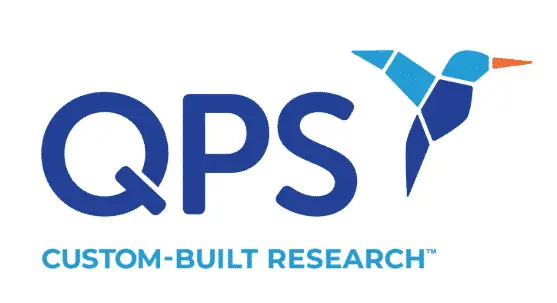QPS is a leader in bioanalysis for pharmaceutical research, including inductively coupled plasma mass spectrometry (ICP-MS).
What Is Mass Spectrometry?
Mass spectrometry (MS) is a powerful and sensitive analytical technique used to measure the masses (normally as mass-to-charge ratio) of individual molecules present in a sample. It allows for the characterization and quantification of unidentified compounds in both simple and complex mixtures.
Invaluable tools in a wide range of fields and applications, mass spectrometers consist of three main components: an ion source, a mass analyzer, and a detection system. In a mass spectrometer, the sample is converted into gaseous ions in a process known as ionization. Then the ions are sorted and separated according to their mass-to-charge (m/z) ratios, and detected in proportion to their relative abundances. The data will be displayed in a mass spectrum, which is a plot of the m/z ratios against the ion intensities.
J.J. Thomson, who discovered the electron in 1897, built the first mass spectrometer in 1912. Mass spectrometry has evolved immensely since it was first introduced, and at least five Nobel Prizes in Physics and Chemistry have been awarded to work directly related to mass spectrometry (1906 to J.J. Thomson, 1922 to Francis Aston, 1939 to Ernest O. Lawrence, 1989 to Wolfgang Paul, and 2002 to John Fenn and Koichi Tanaka). Although mass spectrometers still operate on many of the original principles, MS now incorporates more powerful and complex instruments with higher sensitivity requirements.
MS is now considered an essential analytical tool for many quantitative and qualitative applications. It is commonly used in many diverse fields of study, including the following:
- Genomics
- Lipidomics
- Metabolomics and metabonomics
- Microbiomics
- Proteomics
- Drug Discovery
- Clinical research
- Pharmaceutical analysis
- Food analysis and authentication
- Forensic toxicology
- Environmental analysis
- Geology
Elemental Analysis Using ICP-MS
For a small but important number of compounds, ICP-MS is a powerful method used to conduct quantitative and qualitative analysis. During ICP-MS, an inductively coupled plasma ionizes the samples, the ions are then separated and detected usually with a quadrupole mass spectrometer by their mass-to-charge ratio. Due to its high sensitivity and less cumbersome pretreatment procedures when compared to other mass spectrometry techniques, ICP-MS is an invaluable tool in elemental analysis.
Features of ICP-MS
- ICP-MS detects elements instead of molecules. With the exception of a few elements (such as C, H, N, O, and the noble gasses), all “pharmaceutical-important” elements can be detected. A specific element serves as a tag for the molecule of interest, thus enabling quantitation of the drug molecule in a particular matrix. The technique is highly linear and can be used quantitatively for a broad concentration range. Sample processing is relatively straightforward with high throughput resulting in fast turnaround times.
- ICP-MS measures total and free concentration. Typical applications of ICP-MS are pharmacokinetic, pharmacodynamics, toxicology, mass balance, and imaging studies. Furthermore ICP-MS is frequently used for limit tests of elements, trace elemental analysis, and formulation analysis.
- LC-ICP-MS measures molecule-specific concentration. Liquid chromatography-inductively coupled plasma mass spectrometry (LC-ICP-MS) measures the element concentration of all compounds present in the matrix that contain the element of interest and that are chromatographically separated. LC-ICP-MS enables metabolite profiling and determination of biotransformation and/or degradation products, and different valences or species of the element.
- ICP-MS is capable of multi-element analysis. Using ICP-MS, researchers can measure multiple elements simultaneously in a single analysis. From a laboratory perspective, this is a significant advantage.
- ICP-MS can be combined with LC-MS/MS (parallel detection). A powerful analytical technique, liquid chromatography with tandem mass spectrometry (LC‑MS/MS) provides separating power, a high degree of sensitivity, and selective mass analysis.
- ICP-MS can be used as detector for ELISA assays. Commonly used analytical biochemistry procedures, enzyme-linked immunosorbent assays (ELISAs) are designed to detect and quantify substances.
Why Choose QPS?
Since 2004, QPS has built up vast ICP-MS experience in sample preparation, method development, validation, and quantitation of many elements in various animal species and matrices, from research and development (R&D) to manufacturing origin. We have three LC-ICP-MS systems dedicated to pharmaceutical R&D, and thus have plenty of capacities for your studies.
Our team is very flexible and cooperative, and we boast broad experience in bioanalytical chemistry, including regulatory aspects. Plus, QPS is accustomed to conducting complex studies. We invite you to visit and view any of our global laboratories. Please contact us for an appointment






